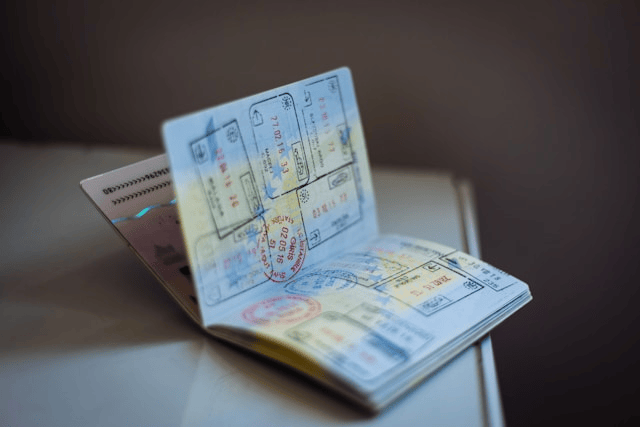Planning your next big adventure? Whether you’re heading to Europe, exploring Asia, or jetting off for a work trip, understanding the visa requirements by country is a crucial first step. Nothing derails travel plans faster than arriving at the airport and being turned away because of improper documentation.
Visa policies vary dramatically around the world depending on your nationality, the reason for travel, and how long you plan to stay. This guide will walk you through the essentials of international visa rules so you can avoid costly mistakes and travel with confidence.
Why Understanding Visa Requirements Is Essential
When preparing for international travel, your passport alone may not be enough. While some countries offer visa-free access or a visa on arrival, others require a pre-approved visa issued by their embassy.
Failing to check visa requirements can lead to denied boarding, fines, or even deportation. That’s why one of the best international travel tips is to research visa rules thoroughly for each country you plan to visit—including stopovers and transits.
Types of Visas: Which One Do You Need?
Understanding the different types of visas can help you avoid confusion when applying or entering a country. Here are the most common visa categories:
Tourist Visa
The most common for leisure travelers, this visa allows short stays (usually 30 to 90 days) for purposes like sightseeing, visiting friends, or relaxation. Some countries issue this as an e-visa or offer a visa on arrival.
Business Visa
This is for those attending meetings, conferences, or signing deals abroad. It usually doesn’t allow you to take up employment in the host country.
Transit Visa
If you’re passing through a country en route to another, some places require a transit visa even if you’re only there for a few hours. Always check layover rules.
Work and Student Visas
These long-term visas are for those relocating to work or study abroad. They require more documentation such as sponsorship letters, employment contracts, or school admission proof.
Visa-Free Entry, Visa on Arrival, and E-Visa
-
Visa-Free Countries: No application needed; you just show your passport at entry.
-
Visa on Arrival: Obtainable at the border, usually for a fee.
-
E-Visa: Apply online before you go, then receive an email or digital code.
Popular Visa-Free and Visa on Arrival Destinations
Your passport plays a big role in determining where you can go visa-free. For instance, holders of a U.S., UK, Canadian, or EU passport enjoy broad travel freedom. However, policies constantly change, so always double-check before you leave.
Visa-Free Countries (Examples):
-
For U.S. citizens: Japan, South Korea, most of Europe (Schengen Area), Mexico, and more.
-
For Indian citizens: Bhutan, Nepal, Maldives (visa on arrival), and Indonesia (visa-free for 30 days).
-
For EU passport holders: Nearly all of Europe, many parts of South America, and Southeast Asia.
Visa on Arrival or E-Visa Friendly Countries:
-
Thailand: Visa on arrival for many nationalities for up to 15 days.
-
Turkey: E-visa available online.
-
Kenya: Offers e-visa for tourism, business, or medical visits.
These flexible visa options make spontaneous travel easier but you still need to meet entry conditions like return tickets or proof of accommodation.
How to Check Visa Requirements by Country
Knowing how to check visa requirements by country can save you a lot of hassle. Here are a few trusted resources:
-
Embassy websites: Always the most up-to-date and reliable.
-
IATA Travel Centre: Used by airlines and travel agents.
-
VisaHQ or Sherpa: User-friendly tools that let you check entry rules by nationality and purpose of travel.
-
Government travel advisory sites: Many countries provide guidance for their own citizens (e.g., travel.state.gov for U.S. travelers).
When planning multi-country trips, remember to check transit visa rules for layovers even if you’re not leaving the airport.
How to Apply for a Visa
If your destination requires a pre-arranged visa, it’s important to start early. Here’s a general guide on how to apply for a visa:
1. Gather Required Documents:
-
Valid passport with blank pages
-
Passport-size photos
-
Completed application form
-
Flight itinerary and accommodation details
-
Proof of funds or bank statements
-
Travel insurance (mandatory for some countries)
2. Submit Your Application:
Depending on the destination, you may need to:
-
Visit the nearest consulate or embassy
-
Apply through a visa application center
-
Use an online portal for e-visa submission
3. Wait for Processing:
Processing times vary from same-day approval for some e-visas to several weeks for others. Apply at least 4–6 weeks before departure to be safe.
4. Receive Your Visa:
You may get a sticker in your passport, a digital approval email, or a QR code. Keep both digital and printed copies with you during travel.
Common Mistakes Travelers Make with Visas
Even seasoned travelers can fall into these traps. Avoid these common errors:
-
Overstaying a visa: Can lead to fines, bans, or deportation.
-
Assuming all countries offer visa on arrival: Always verify.
-
Not checking transit visa rules: Some countries (like the U.K. or the U.S.) require transit visas even for layovers.
-
Traveling with an expired passport: Many countries require your passport to be valid for at least 6 months after arrival.
Helpful Tools and Resources for Visa Planning
Make your travel prep easier with these tools:
-
IATA Travel Centre: For real-time visa info by nationality and destination.
-
Sherpa Travel: Easy-to-navigate visa and entry requirement checker.
-
VisaHQ: Offers application support services and processing.
-
Your country’s foreign office or travel advisory website: Great for safety and entry requirement updates.
-
Travel insurance: Some plans offer legal support or help if you’re denied entry due to visa issues.
Final Thoughts: Plan Ahead, Travel Smart
When it comes to international travel, visa planning is just as important as booking flights and packing your bags. Understanding the visa requirements by country ensures that your trip starts smoothly and avoids any unexpected surprises at the border.
Whether you’re traveling for leisure, business, or long-term relocation, take the time to verify entry policies for every destination on your itinerary. From visa-free countries to e-visas and embassy applications, knowing your options in advance is one of the smartest travel habits you can build.









